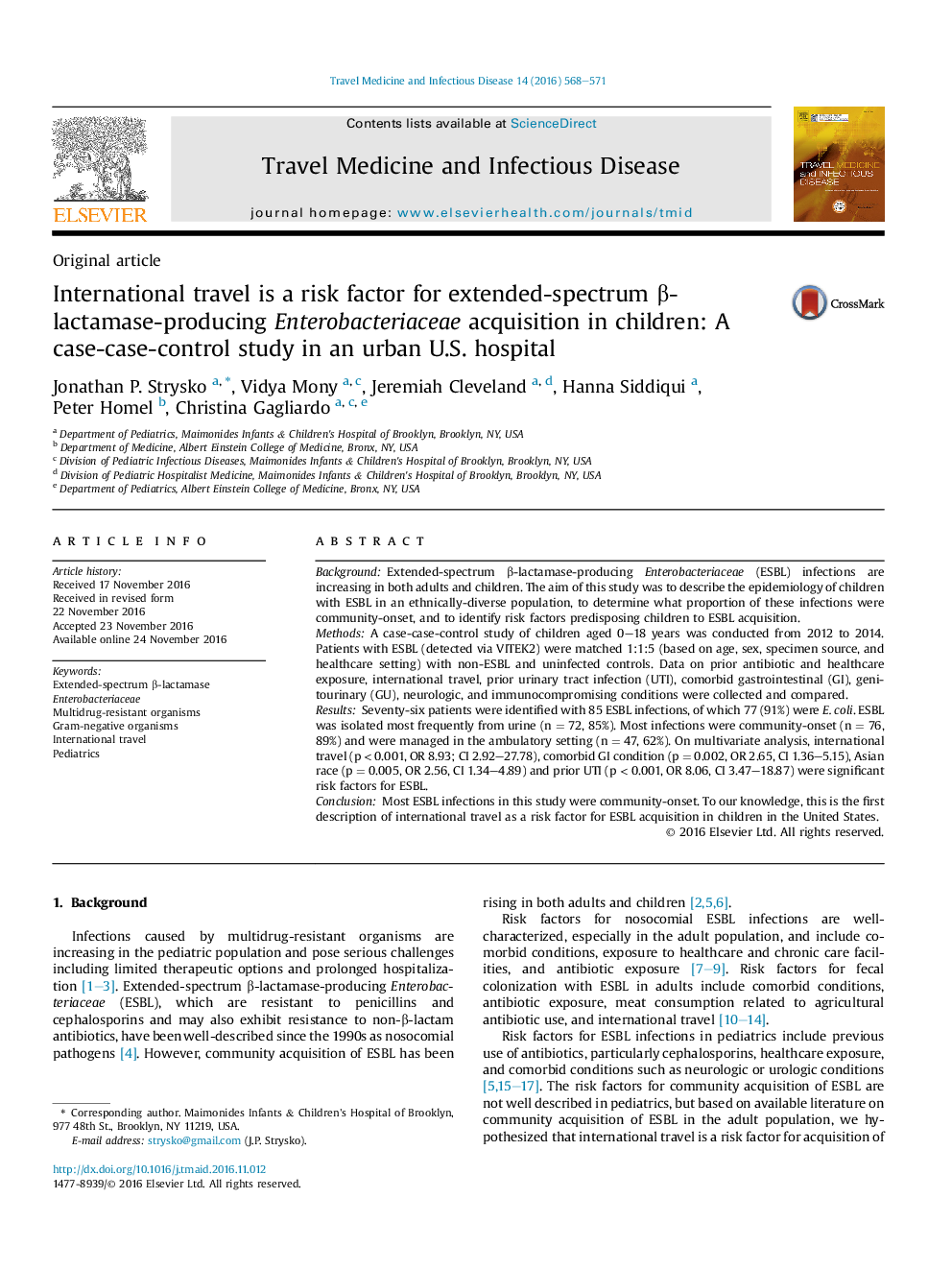| Article ID | Journal | Published Year | Pages | File Type |
|---|---|---|---|---|
| 5670519 | Travel Medicine and Infectious Disease | 2016 | 4 Pages |
BackgroundExtended-spectrum β-lactamase-producing Enterobacteriaceae (ESBL) infections are increasing in both adults and children. The aim of this study was to describe the epidemiology of children with ESBL in an ethnically-diverse population, to determine what proportion of these infections were community-onset, and to identify risk factors predisposing children to ESBL acquisition.MethodsA case-case-control study of children aged 0-18 years was conducted from 2012 to 2014. Patients with ESBL (detected via VITEK2) were matched 1:1:5 (based on age, sex, specimen source, and healthcare setting) with non-ESBL and uninfected controls. Data on prior antibiotic and healthcare exposure, international travel, prior urinary tract infection (UTI), comorbid gastrointestinal (GI), genitourinary (GU), neurologic, and immunocompromising conditions were collected and compared.ResultsSeventy-six patients were identified with 85 ESBL infections, of which 77 (91%) were E. coli. ESBL was isolated most frequently from urine (n = 72, 85%). Most infections were community-onset (n = 76, 89%) and were managed in the ambulatory setting (n = 47, 62%). On multivariate analysis, international travel (p < 0.001, OR 8.93; CI 2.92-27.78), comorbid GI condition (p = 0.002, OR 2.65, CI 1.36-5.15), Asian race (p = 0.005, OR 2.56, CI 1.34-4.89) and prior UTI (p < 0.001, OR 8.06, CI 3.47-18.87) were significant risk factors for ESBL.ConclusionMost ESBL infections in this study were community-onset. To our knowledge, this is the first description of international travel as a risk factor for ESBL acquisition in children in the United States.
